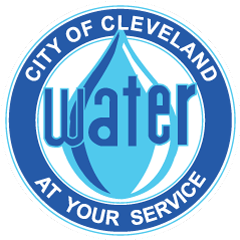Water Main Breaks
Water main breaks are, unfortunately, an inevitable part of water service. At Cleveland Water, we address an average of 5 breaks a day. And while they’re never convenient, we work hard to address them as quickly as possible with the least amount of disruption.
Water main breaks are unpredictable. One contributing factor is weather. The colder the weather is for an extended period of time, the more water main breaks occur. Breaks can also occur when there is a sudden increase in water pressure in a water main, such as when a fire hydrant is closed too suddenly.
Reporting a Break or Leak
To report a water main break or leak, call our 24/7 emergency call line at 216-664-3060. When calling, it is helpful for us to know the following information:
- The exact location
- Any visible damage to the road or surrounding area
- How much water is flowing
- If your water service is impacted
What Happens Once a Break is Reported
Once a break or leak is reported, an investigator will be sent to the area to evaluate the break and determine its severity. Some of the factors they evaluate include:
- Is there a safety issue for critical care centers (i.e. hospitals)?
- Is it affecting a busy intersection or street?
- Is it causing a major service disruption to customers?
- Are there conditions making this a danger, such as icy conditions or a street depression?
Based on their observations, the investigator will prioritize the leak and secure the area. The status of all active repairs is constantly assessed and prioritized by managers, who will dispatch the next available pipe repair crew based on priority.
The investigator will request other utilities be marked and may partially shut valves in the area to reduce the amount of water flowing form the break but still allow some water service to customers until the repair crew can arrive.
What Happens During the Repair Process
A typical repair can take anywhere from 4-6 hours, depending on the type of repair and the location of the break. Once a pipe repair crew arrives to a break site, they first set up a safety perimeter. Next, they will locate the exact leak location.
All of our underground infrastructure is mapped in GIS. Repair crews use these maps to identify what assets are located below ground and approximately where. Because water takes the path of least resistance, the location where the water is surfacing does not always correspond to the location of the break. To determine where exactly the break is and avoid unnecessary excavating, the crew may drill test holes through the pavement. They then push metal probing rods through the holes to make contact with the water main and listen for the leak sound to pinpoint the location of the escaping water.
Once the break is located, the crew will turn off the valves that deliver water to the broken water main, either partially or completely. This may cause a temporary disruption in water service for residents and businesses in the area. Our crews will go door to door and notify residents they’ll be temporarily disconnecting water service if it’s a non-emergency situation and circumstances allow. The crew will then dig to expose the broken water main. Depending on the depth and size of the excavation, shoring equipment may be required for safety purposes. Once exposed, the crew will determine what type of repair can be made or if a section of the water main will need to be replaced.
The crew makes the repair and then flushes the main and tests the water to ensure safe, quality water is again flowing before restoring water service to affected customers. The final step is filling in the hole and preparing it for the restoration process.
What is the Restoration Process
Street restoration is normally completed at a later date. This is dependent on the time of year, available materials, and the city where the break occurred. To complete the street restoration, concrete is poured into the hole and followed by asphalt. Water service is not affected during street restoration.
